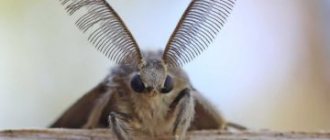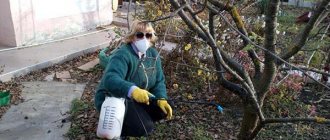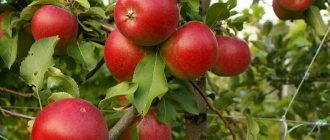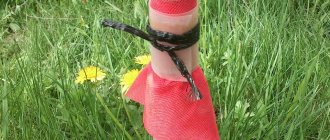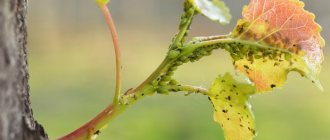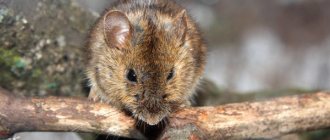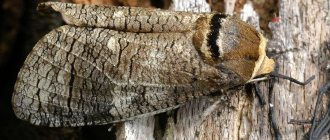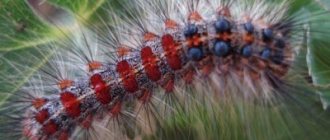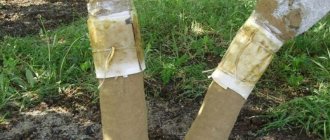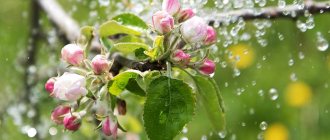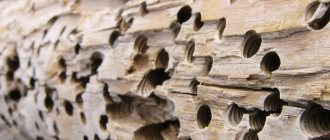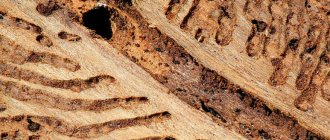In regions where there are large fields or forests nearby, orchards are subject to massive rodent attacks in winter. Animals do not spare either young or older trees, gnawing the bark, eating buds, young twigs, and undermining the roots. To preserve the garden, you need to make special structures.
We'll tell you which trees are most often attacked and how to protect them. If possible, we will consider all materials suitable for these purposes.
Which trees are at risk?
Hares and field mice, which most often attack gardens, have their own taste preferences, which is why some trees stand untouched, while others die from damage. For example, rodents attack pears only when there is absolutely nothing to eat, but apple trees, especially young ones, are in trouble.
The following trees are not attacked at all:
- apricots;
- cherry plum;
- plum;
- cherry;
- peaches.
The explanation here is simple: the bark of stone fruit species is very bitter, and it is impossible to eat it. However, there may be some minor damage from animals on these trees, but it is not life-threatening. It turns out that the closest attention should be paid to the protection of young apple trees.
What is the threat to apple trees in winter?
In winter, animals that eat plant foods starve and are in constant search of food. They often gnaw bark from trees. More often than others, apple trees suffer from rodents, the bark of which is quite soft and does not taste bitter, such as plums or cherries.
Deterioration of the bark, especially when a large area is damaged, can lead to disruption of the movement of nutrients within the tree. In addition, without bark, the apple tree becomes defenseless against various infections and insect pests.
It also happens that mice gnaw the roots of a tree. This can cause gradual drying out or even death of the apple tree.
Animals dangerous to apple trees
Most often, apple trees are eaten by:
- voles;
- house mice;
- hares;
- wild rabbits.
Animals are especially hungry at the end of winter and the very beginning of spring, so raids on gardens become more frequent at this time.
Hare
Ways to protect an apple tree from rodents
Animals most actively attack gardens in February and March. This means that the chosen method of protection must be durable, resistant to prolonged humidity and winds. At the same time, you need to remember that under dense materials the bark can block, which is no better than damage from teeth.
To protect apple trees from hares you can use:
- soldered mesh with small cells;
- nylon reinforced mesh;
- plastic bottles tied together.
The height of the fences must be at least a meter.
You can save a tree from mice by tying it with old nylon tights, elastic tape, or spruce branches. You can try to deceive the animals by tying the tree with birch bark. Additionally, sources of pungent odors, bait poisons, and ultrasonic repellers are used.
The least expensive but effective method is to compact the snow around the tree trunk. The higher the layer, the better the protection.
Winding trunks
In most cases, soft materials are preferred. They are easy to use and cause less damage to the cortex. You can choose thick elastic fabric or polyethylene.
How to protect apple trees from mice in winter using this material? For convenience, it is better to cut the canvas into ribbons 20-25 cm wide. It is necessary to wrap the tree trunks so that there are no empty gaps left. Each subsequent turn needs to be slightly overlapped with the previous one. Such a margin will not allow the wind to unwind the covering material. It is secured on top with wire or rope at intervals of 15-20 cm.
To decide what to wrap an apple tree against mice for the winter, you need to take into account the number of trees in the garden. Buying agrofibre or film for a large garden can be very expensive. In this case, protective materials can be combined. For example, wrap some trees with roofing felt. Even spruce branches are used in gardening practice. They tie a standard with it, placing it with its branches down.
It is important to know that you need to use roofing felt correctly. The first layer must be wrapped with soft cloth or paper. The covering material should fit tightly to each other so that gaps do not form between them. Water can get into the voids, which will subsequently lead to icing of the trunk.
The structure of roofing material is quite dense and impenetrable, so with the onset of spring it must be removed immediately.
Protecting a tree from hares
It is impossible to frighten a hare with compacted snow - this animal, rising on its hind legs, can gnaw off the bark from the lower skeletal branches. To protect a tree from it, it is better to use natural features - a good sense of smell and timidity. Experienced gardeners simply tie black bags to the lower branches of young apple trees, which rustle even in the slightest wind and greatly frighten hares.
However, there are fearless individuals, and therefore the protection of the tree must be more thorough:
- make a chain-link fence;
- take old buckets, cut off the bottom, cut them lengthwise and put one on top of the other around the tree;
- hide the tree behind a soldered mesh.
Hares are capable of digging, so all structures need to be buried 30 cm into the ground. The height of the fences is at least 1.5 meters.
The long-eared pest can be scared away by a pungent odor; for this purpose, a talker is made. In the fall, mix clay with cow manure in equal parts, dilute with water to the consistency of sour cream, then add 50 g of kerosene per 10 liters of mash. The trunk and skeletal branches are coated with this composition using a brush. The mixture stays on the branches until spring and repels the hare with a pungent odor.
Mice also do not like such aromas and will avoid the tree.
Spraying
Preparing apple trees for winter (autumn) includes such a necessary measure as spraying. An effective remedy in this regard is copper sulfate. Rodents react negatively to the smell of this substance. In this case, the trees receive double protection. It destroys insect pests and prevents fungal infections that can affect tree trunks due to the formation of excessive dampness in the winter-spring period.
To prepare the solution, take 100 g of powder and 1 bucket of water. Spraying is carried out very generously, as this product does not harm the plants. It can also be used to treat young trees. Typically, such work is carried out in November, in calm, dry weather.
Spraying with Bordeaux mixture can be carried out even at the beginning of winter with the appearance of the first frosts. Sensing an unpleasant odor, mice will avoid your garden. And late processing of the garden will allow you to preserve its effect longer.
Protecting seedlings from mice
It is difficult to protect a tree from mice mechanically - these animals use the slightest cracks, dig tunnels, fearlessly climb to any height, and therefore are able to overcome fences made of mesh or boards.
Sheets of perforated iron can save you, but they are hard to get, and their cost is not low. Therefore, it is best to try to scare away the animals with a pungent odor:
- soak the sawdust with a solution of creolin or carbolic acid (50 g per 10 liters of water) and spread it over the entire area of the tree trunk, covering it with spunbond in snowless winters;
- grow cilantro (coriander), dry it, tie it in bunches and tie the most valuable seedlings with them;
- tie the trunks with young spruce branches.
Grandma's old method gives good results. Unnecessary nylon tights or stockings are wrapped tightly around the trunk and main branches, secured with twine and generously soaked in kerosene (you can also use diesel fuel). Not a single lover of young bark can overcome such protection.
Some gardeners wrap apple trees with roofing felt. Indeed, this is good protection against rodents, but it has two significant drawbacks.
The first is that roofing felt does not allow air to pass through, and the tree needs it even in winter, during hibernation.
Second, roofing felt quickly heats up from the sun. At the time of the thaw, the temperature under protection will rise so much that sap flow in the cambium will begin. Once temperatures drop below freezing, the tree may die due to extensive peeling of the bark.
Roofing felt protection can be used, but then it must be removed from time to time, which can be difficult on large or remote farms.
To avoid attracting rodents in winter, do not use straw for mulching.
Protecting the slate apple tree from rodents
An apple tree in a slate culture, due to the location of the tree relative to the ground, is more susceptible to attack by rodents than one grown in the usual form. However, it can also be protected from the attacks of these animals, only a little more material is required.
- Under the crown, you can arrange cilantro, elderberry or wild rosemary in heaps.
- You can make a mound of sawdust soaked in creolin or other harsh substance.
- You can lay out plastic bottles with potent poison.
Slate apple trees can be protected from hares by covering them with a metal mesh, and to prevent it from sagging, some gardeners make arches from pipes or fittings. Only in this case, the mesh needs to be buried 30 cm so that hares and rabbits do not dig under it.
What to do with a damaged tree
Unfortunately, it happens that despite all efforts, mice or hares still spoil the tree, gnawing the bark or damaging the fruit buds. In some cases, the tree can be saved, but help cannot be delayed.
- Cover all minor damage with garden pitch or clay with cow dung.
- Serious damage can be lubricated 3 times a day with a mixture of sunflower oil and tar, and within a month the bark will recover.
- If the damage is very serious, you can cut down the apple tree, moving 2-3 cm away from the bud. A new shoot will begin to grow in this place, and after a few years a full-fledged apple tree will form from it.
A lotion with linden decoction gives a good result in terms of restoring the bark. To prepare it, boil 200 g of linden bark with a liter of water for 40 minutes. The strained broth is used to moisten bandages or cotton rags, which are tied around the bare branches and trunk, and thick paper is placed on top. According to gardeners, within a month the apple tree will be covered with a thin layer of young bark and will not disappear. This method works if the cambium is not damaged.
In the case of ring damage to the bark, lotions and garden pitch will not help. You can try to save the tree by grafting a bridge, which allows the sap to be transferred bypassing the damaged area. To do this, use cuttings harvested in the middle part of the crown. One end is grafted to the bottom of the wound, the other to the top. The technique is quite complicated, but you can try to save the tree.
Coating trunks
When whitewashing the trunk in the autumn, you need to add various odorous substances to the solution. However, this method provides only temporary protection, since odors disappear over time.
Thick whitewashing is another important step in preparing an apple tree for winter. In autumn, tree trunks are coated with liquid mixtures. Unlike whitewash, they should have a thick consistency.
It is better to purchase such products in stores, the chemical composition of which has already been selected in the correct proportions. Such solutions can be prepared independently, taking into account the recommendations of experienced gardeners.
To prepare the mixture, you will need the following components: 1.5 kg of laundry soap, 2 bottles of vegetable oil (0.5 l), 200 ml of turpentine and 150 g of naphthalene.
If there is excess mixture left after processing the trunks, it should be poured evenly around the tree.
